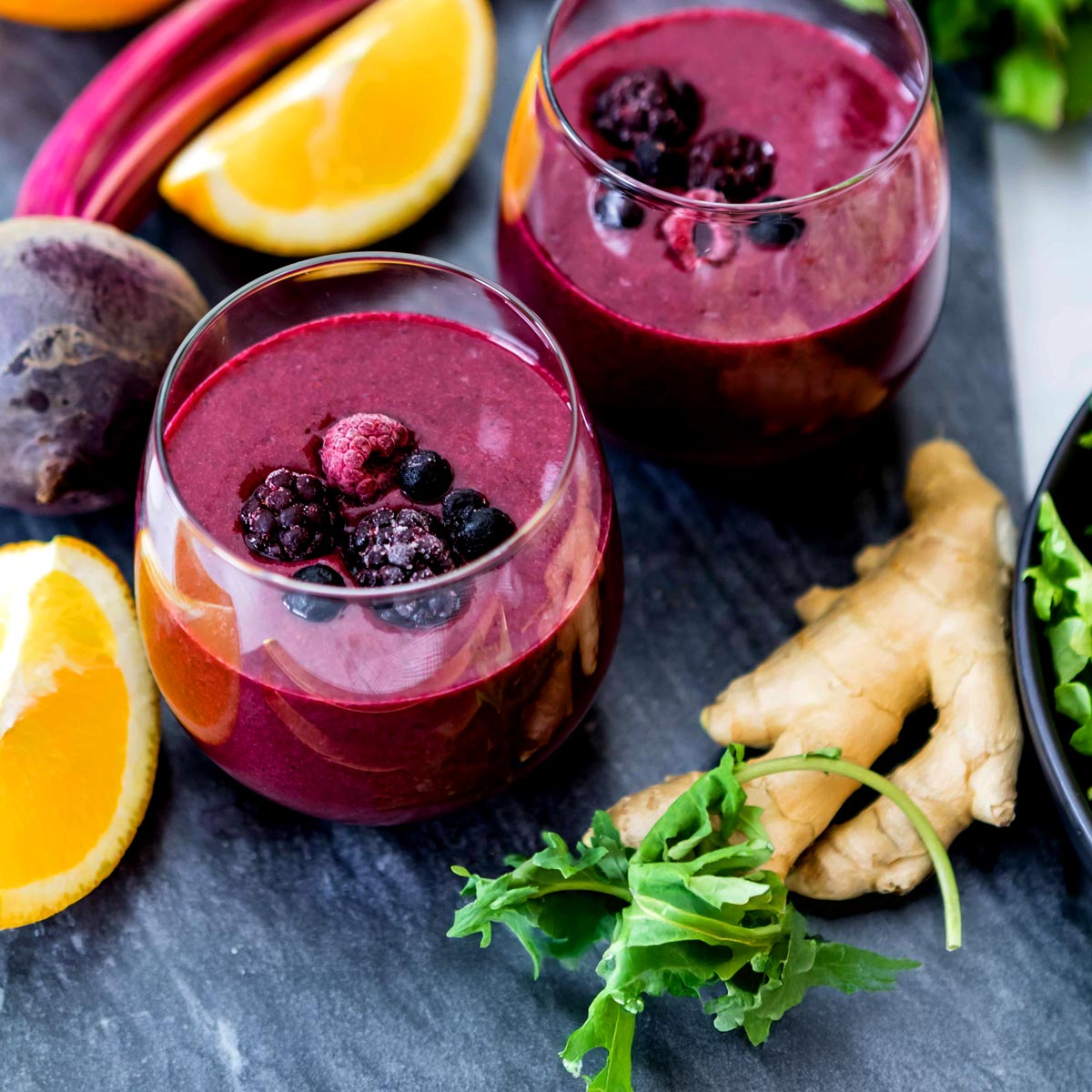
This post may contain affiliate links, meaning I can earn a small commission from items you purchase (at no cost to you).
Aging is wild. One day you’re doing handstands in the grass, the next you’re Googling “why does my knee sound like popcorn?” A lot of our aches and pains come down to inflammation—the bloating, brain fog, random rashes, and that lovely mid-afternoon crash. To combat it all, I created this anti-inflammatory smoothie recipe using plant-based ingredients that combat inflammation and are packed with nutrients.
Table of contents

Why You’ll Love It
- It tastes like a tropical treat. Earthy beets and kale get totally balanced out by sweet pineapple, mixed berries, and fresh orange—bright, tangy, and surprisingly smooth.
- It helps calm everyday inflammation. Each ingredient is chosen to support your joints, digestion, and energy—from ginger and berries to chia seeds and leafy greens.
- It’s a 5-minute reset. Perfect after a long run, a Costco marathon, or anytime your body needs a little extra love without any fuss.
- It’s nutrient-dense without being heavy. Fiber, antioxidants, and healthy fats come together in a refreshing, 16-oz blend your body will thank you for.
Save this Recipe for Later!
Enter your info below and I’ll send it straight to your inbox to save for later.
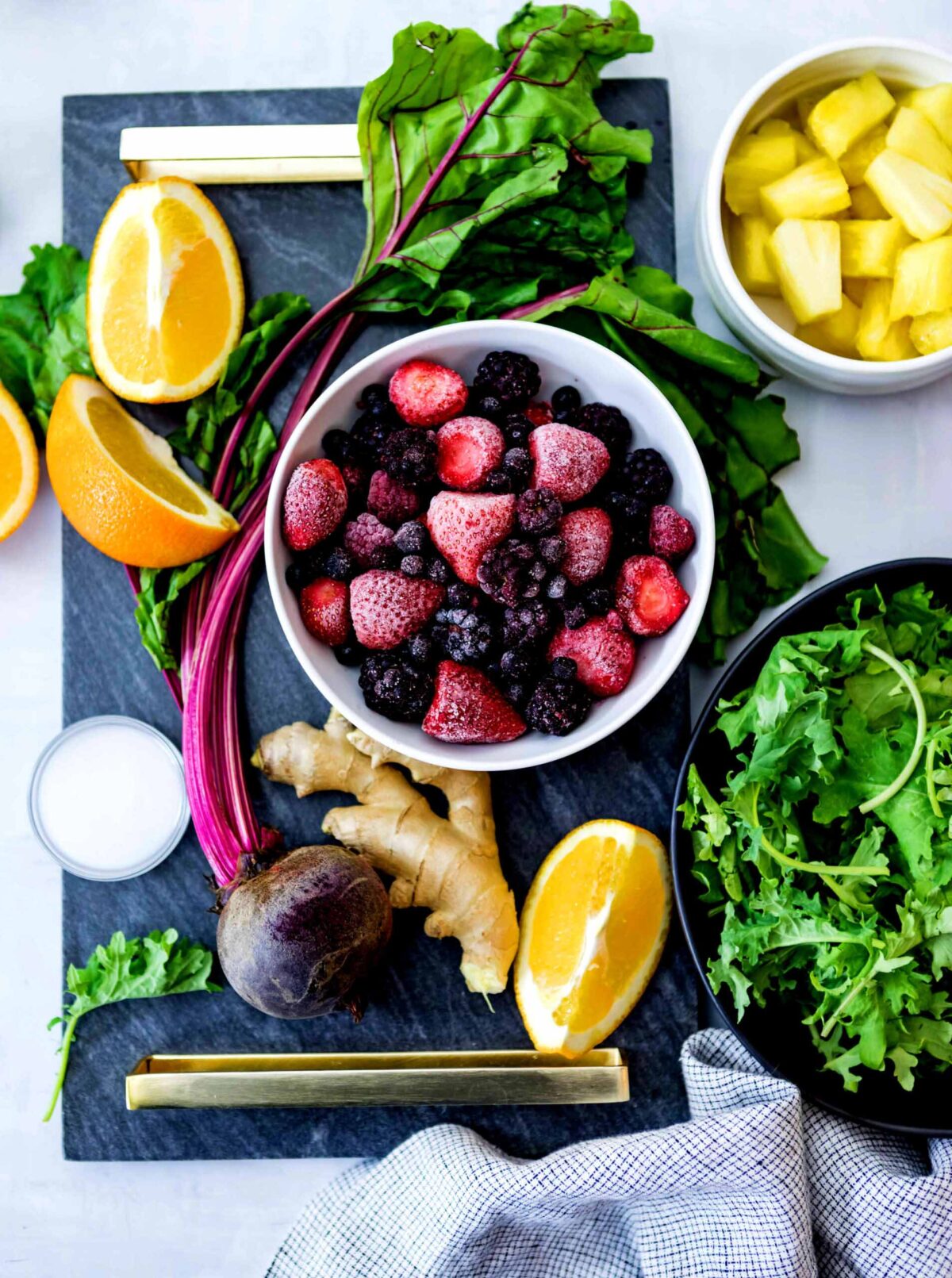
Ingredients You’ll Need
Sip on this smoothie with fresh beets, citrus fruits and anti-inflammatory ginger to recover from a Saturday morning shopping trip to Costco (never a good idea), a long run with your bestie or just another day living la vida loca. Here’s what goes into your glass, how each ingredient tastes and blends, plus the nutrition perks they bring to the party:
- Kale: Earthy and mildly grassy, kale makes a great base once blended properly. Blend it first with the water to avoid leafy bits. Kale is rich in antioxidants—especially flavonoids and vitamin C—which help reduce inflammation by neutralizing harmful free radicals.
- Beets: Sweet, earthy, and beautifully vibrant. Chop them small so your blender doesn’t struggle. Beets are loaded with betalains, powerful anti-inflammatory compounds that support heart health and may help lower blood pressure.
- Oranges: Bright, juicy, and naturally sweet, oranges add a silky texture and help balance the earthiness of the beets. Peel and remove seeds to avoid bitterness. Their vitamin C content helps reduce inflammation and boosts immune system by protecting cells from oxidative stress.
- Mixed Berries: Blueberries, blackberries, and raspberries bring tart, jammy sweetness and a thick, frosty texture. Their anthocyanins are some of the most powerful antioxidants around, helping reduce inflammation and protect against chronic diseases like heart disease and cancer.
- Pineapple: Tropical, sweet, and a little tangy, pineapple helps everything blend smoothly thanks to its juicy texture. It also contains bromelain, an enzyme known for its anti-inflammatory properties and its ability to support digestion—especially after physical stress or injury.
- Ginger Root: Warm, spicy, and bold in small amounts. Slice or grate it if you want a smoother finish. Ginger is packed with gingerols that provide strong anti-inflammatory effects and may help reduce muscle soreness and arthritis-related inflammation.
- Coconut Oil: Adds a light coconut flavor and a creamy finish. Melt slightly if solid so it blends seamlessly with the frozen fruit. Coconut oil contains lauric acid, a medium-chain fatty acid with anti-inflammatory and antimicrobial benefits that may support immune function.
- Chia Seeds: Mild, slightly nutty, and great for thickening your smoothie. Blend them in for smoothness or sprinkle on top for texture. Chia seeds are high in omega-3 fatty acids, which help reduce inflammation, support heart health, and add fiber and protein to keep you fuller longer.
Dietary Adjustments & Substitutions
Need to swap an ingredient or accommodate a food allergy? Click the button below for tailored suggestions just for you:
How to Make Anti-Inflammatory Smoothie
- Prep your produce. Wash and chop the kale and beets. Peel the orange and remove any seeds so it’s ready for the blender.
- Blend the base. Add the kale, chopped beets, peeled orange, and water to your blender. Blend on high until everything is completely smooth, scraping down the sides if needed.
- Add the fruit and flavor boosters. Toss in the frozen mixed berries, frozen pineapple, fresh ginger root, chia seeds, and coconut oil (if using).
- Blend until creamy. Blend again on high until the smoothie is thick, creamy, and no chunks remain. If it’s too thick, add a splash more water and blend again.
- Pour and enjoy. Pour into your favorite glass or jar. Garnish with extra chia seeds or a slice of orange if you’re feeling fancy, then sip right away for the biggest nutritional boost.
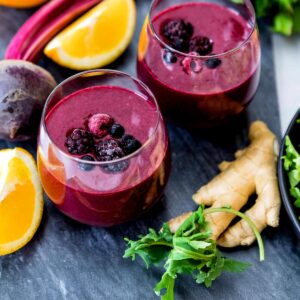
Anti-Inflammatory Smoothie
Ingredients
- ½ cup kale
- ½ cup beets peeled and chopped
- ¾ cup water
- ½ orange peeled
- 1 cup mixed berries frozen
- ½ cup pineapple frozen
- 1 teaspoon fresh gingerroot peeled
- 2 tablespoon chia seeds
- 1 teaspoon coconut oil optional
Instructions
- Add kale, beets, water and orange to blender container.
- Puree on high until the mixture is smooth. Scrape down the sides of chunks of the green stick to the sides of the blender.
- Add remaining ingredients and blend again on high until everything is well combined and smooth.
Helpful Tools
Notes
- Carrots can be substituted for the beets.
- Mango can be substituted for the pineapple.
- Baby kale or spinach can be used to make the smoothie less bitter.
- Use at least one frozen fruit for a refreshingly cool smoothie.
Nutrition
Did you make this recipe?
Leave a review for a chance to win signed copies of my cookbooks!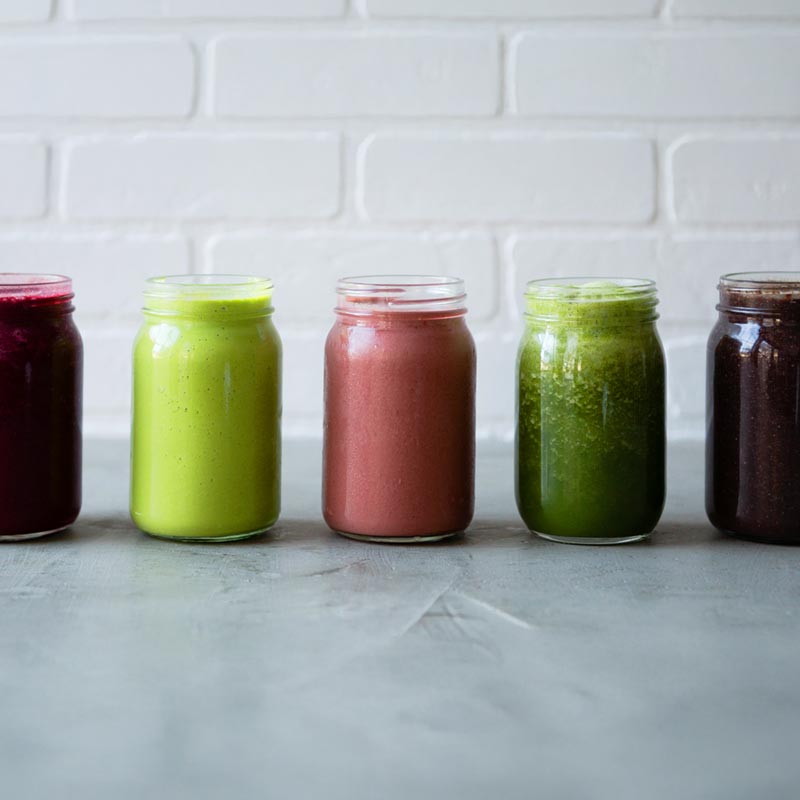
Free 5-Day Smoothie Reset
Get my smoothie recipes to boost energy, fight inflammation and kickstart weight loss—in just 5 minutes a day.
Common Questions
Yes—anti-inflammatory smoothies taste amazing when you balance earthy ingredients (like kale or beets) with naturally sweet fruits (like pineapple, orange, or berries). A little ginger or citrus helps brighten everything up too.
You can have this smoothie every single day, yet feel free to start with just a few times a week to see how your body adjusts. This can be a powerful addition to your routine if you’re working on reducing inflammation.
To mask the taste of beets or leafy greens, add more ginger, pineapple, orange, or berries to help cut the “earthiness.”
Yes, you can make this anti-inflammatory smoothie in advance to save time. Blend it the night before and refrigerate in a sealed jar (drink within 24 hours). Or try freezing meal prep smoothie packs with pre-measured ingredients and dump them into the blender when ready. Another options is to make smoothie cubes (freeze the smoothie in an ice tray) and re-blend with liquid when needed.


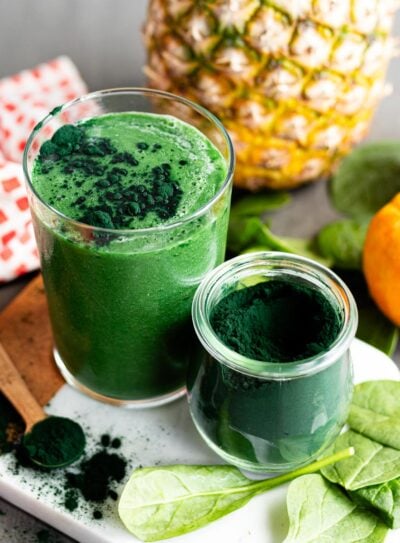
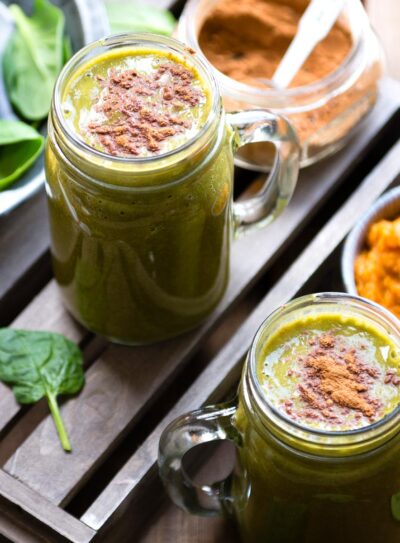

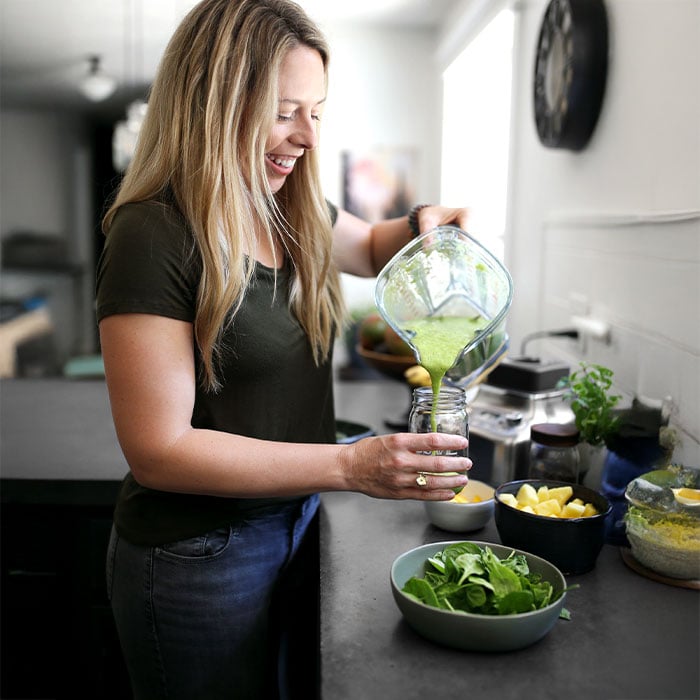
You say that your fat burning smoothie yields l smoothie. It seems to me that it should be for 2. I easily fill a 16 Oz glass. Isn’t that a lot for 1 person?
Hey there Ada! Most of our smoothie recipes make a 16 oz. smoothie – which is one portion. Our goal for you is to add one 16-ounce green smoothie to your day in addition to your regular diet. We found that amount helps to get the optimal amount of added nutritional benefit from the greens and fruit being blended. You can drink it with a meal, as a meal, or as a snack. If it’s too much for you, you could def drink half at one time of day and half later or even the next day.
Ginger reflux’s on me what else can I use?
Hey rawkstar! Fresh turmeric would make a great sub here, if you can tolerate it. Turmeric has really lovely anti-inflammatory properties as well.
Wow! Thank you for sharing this recipe. I’ve recently been diagnosed with mild Chron’s disease. I do not want to be on any medications and an asymptotic for the most part. So I am trying to heal my body as naturally as possible. I have introduced more fiber in my diet (which I’m already seeing positive results from!), and plan on eating as many anti-inflammatory foods/shakes as I can tolerate to help balance my system again! The ginger in this shake really sets it off, I think! Thanks again.
So sorry to hear about your recent diagnosis, Diana. Yet, super proud of you for seeking natural solutions! All the best as you step toward healing.
Do you cook the beet or is it raw? If you cook it, what is the best way without losing all the nutrients?
Totally your choice, Amy! You can use either cooked (steamed is best) or raw beets here. Raw beets have a more earthy flavor. Cooked beets area slightly sweeter + are easier to peel.
Hi can i put almond milk instead of water?
Hi Mary Jane! Generally speaking, it’s totally fine to exchange water and plant-based milk for each other in any recipe. However, depending on the smoothie it can affect the taste. Plant-milk usually does better in smoothies that aren’t citrus based. Since this is a mix of citrus and berry – we say go for it! Give it a blend and let us know what you think. 🙂 We would def avoid traditional cow’s milk dairy here as it can increase inflammation in many cases.
Can I use spinach instead of Kale??
Kale would make a great swap here. It’s even higher in flavonoids, which give it more anti-inflammatory super powers!
I have ginger powder can I use that
Would it be possible to use frozen spinach instead of fresh?
Absolutely Chanelle!
Do you use raw beets or do you cook or stem the beets first?
Hi Dorothy – You can totally use either raw or steamed. Raw beets are a bit more earthy while roasted, steamed or cooked beets have a slightly sweeter taste and are easier to peel.
I cannot have pineapples, are there any good replacements? 🙂 Looking forward to trying this!
Oranges, mangoes or peaches are great subs for pineapple. Happy blending!
Can you use jarred beets? Or is the skin important?
Hi Kathleen! Great question – the beets you find in a jar are similar in nutritional properties, yet will contain more sodium than fresh. And yeah, you do lose additional nutrients (like vitamin A and C, plus antioxidants) when you avoid the skin, yet it’s def better than no beets at all!
It took me several rounds of buying the fresh ingredients before I tried making this smoothie. I found that my beets went bad after 2-3 days, so if i didn’t make it right away, they’d be rotten. BUT, I finally got the beets and kale at the same time and whipped up a batch of this stuff. I admit, I expected it to be gross and earthy-tasting, but none-the-less, good for me. WRONG – it’s actually delicious! The pineapple and berries do alot to “cover up” any beet taste, and the beets add the most beautiful color! It is so good, it’s more like drinking kool-aid than it is like drinking V8. Don’t be scared. I felt stronger and really smart 😉 almost immediately after drinking a batch!
How often can I drink this juice? I love it.
I think you could drink one of these every day if you like, Ronae. 🙂
Thanks
How often and how long does it take to start working?
Hey Bob! Everyone’s body is different so I can’t really say how long it will take. I think if you’re dealing with inflammation, you’ll want to drink this smoothie at least a few times a week and alternate with other green smoothies. You could start feeling better in as short as a few days. Good luck!
I just made this smoothie for the first time — HOLY TOLEDO IT’S SO GOOD. I’m not the biggest fan of beets nor ginger, so I wasn’t expecting to like this THAT much. The flavors compliment each other perfectly. I only had spinach on hand, so I used it instead of kale, and it still tastes so good.
It’s surprisingly good, isn’t it?!
Are the beets raw or cooked?
Hey Sydney! You can actually use either, it’s more of a personal preference. Raw beets are a bit more earthy while roasted or cooked beets have a slightly sweeter taste.
I made this, it tastes great, I also added a tablespoon of plain yogurt
Any smoothie with anti-inflammatory properties is a winner in my book. 🙂
What out a recipe including cucmber & celery?
We have one, Cathy. Here’s the link to that recipe: https://simplegreensmoothies.com/immune-system-booster 🙂